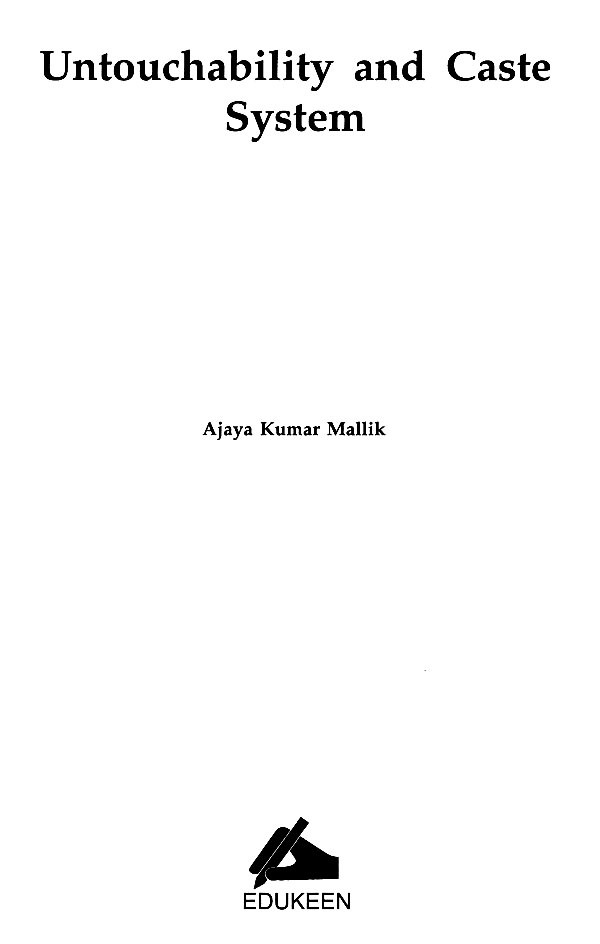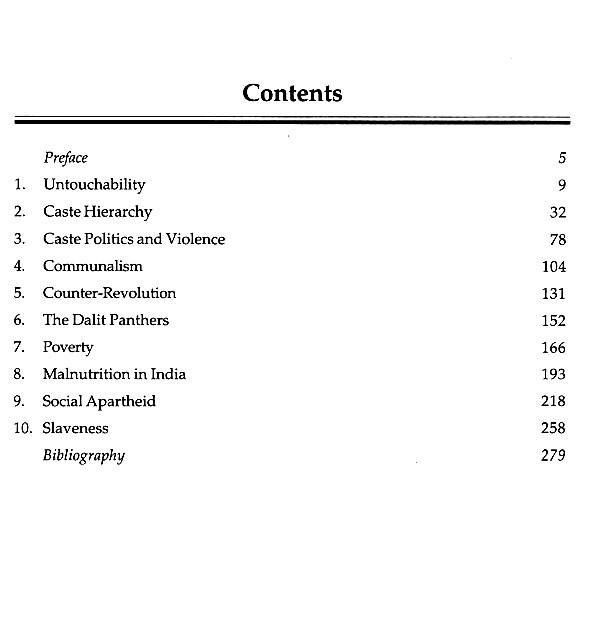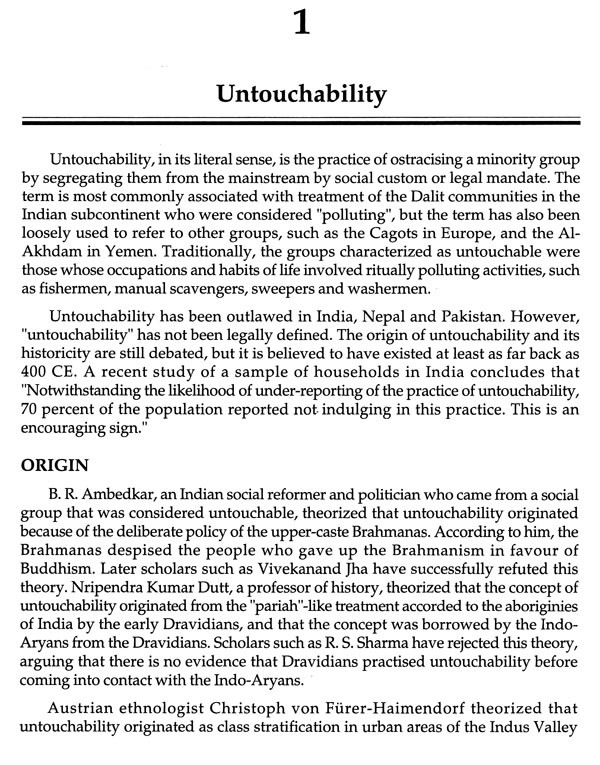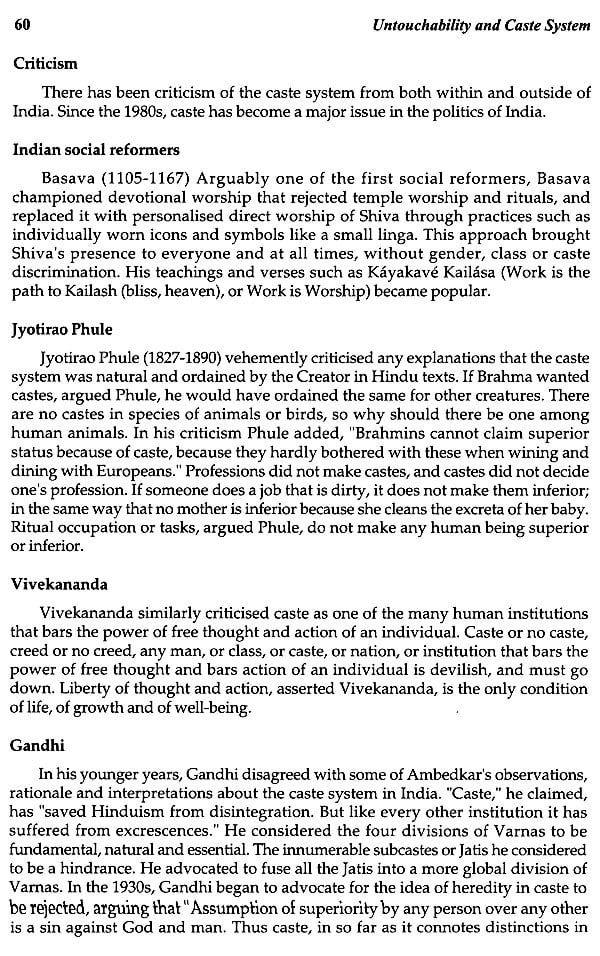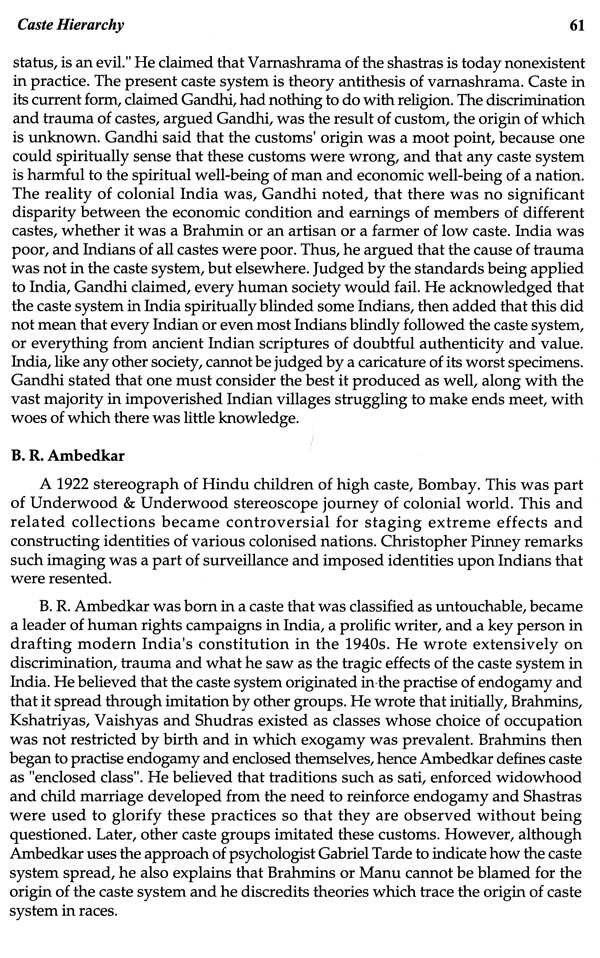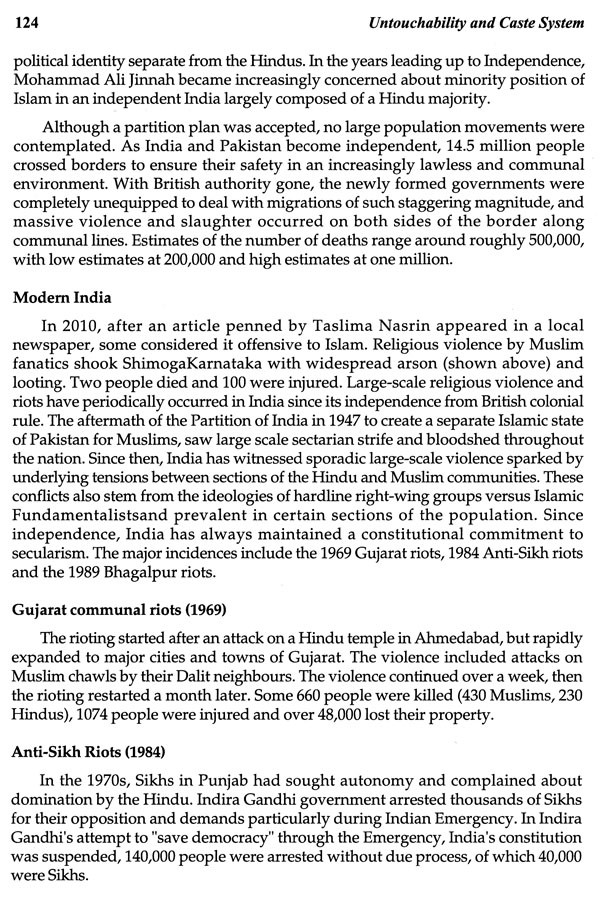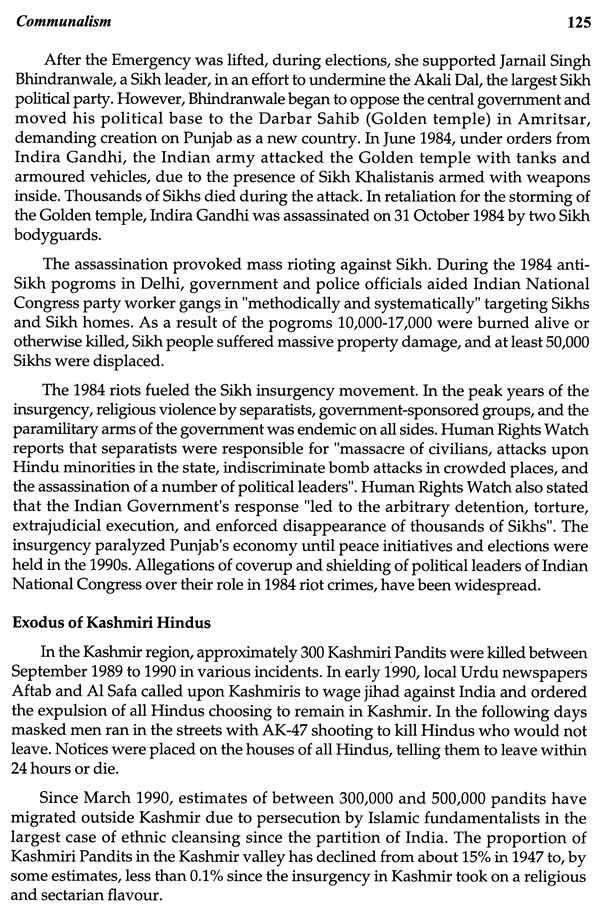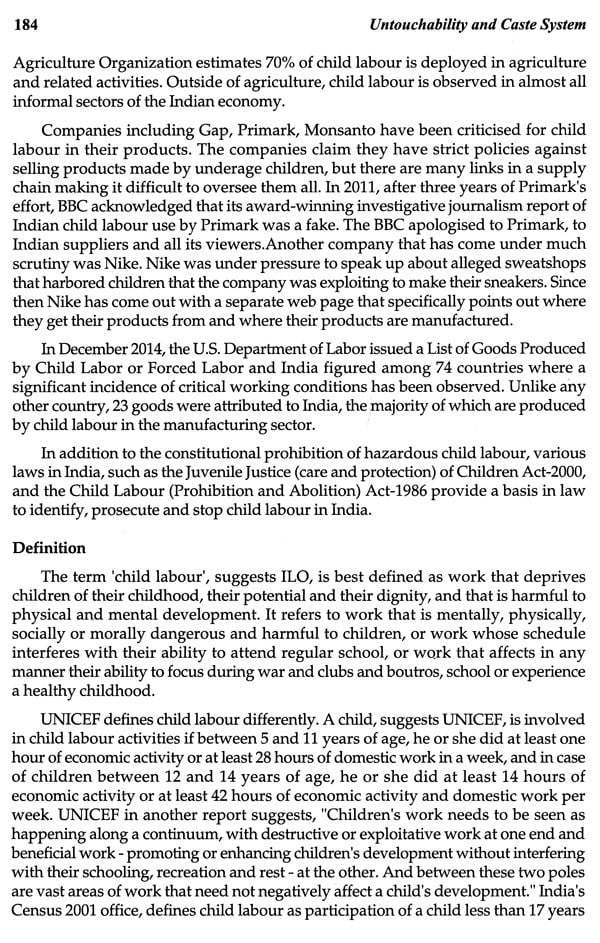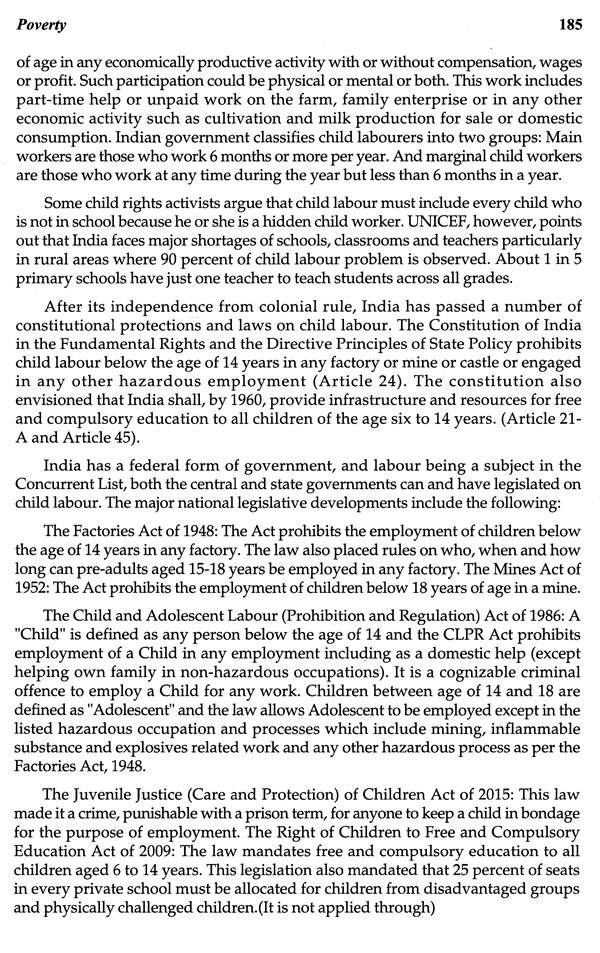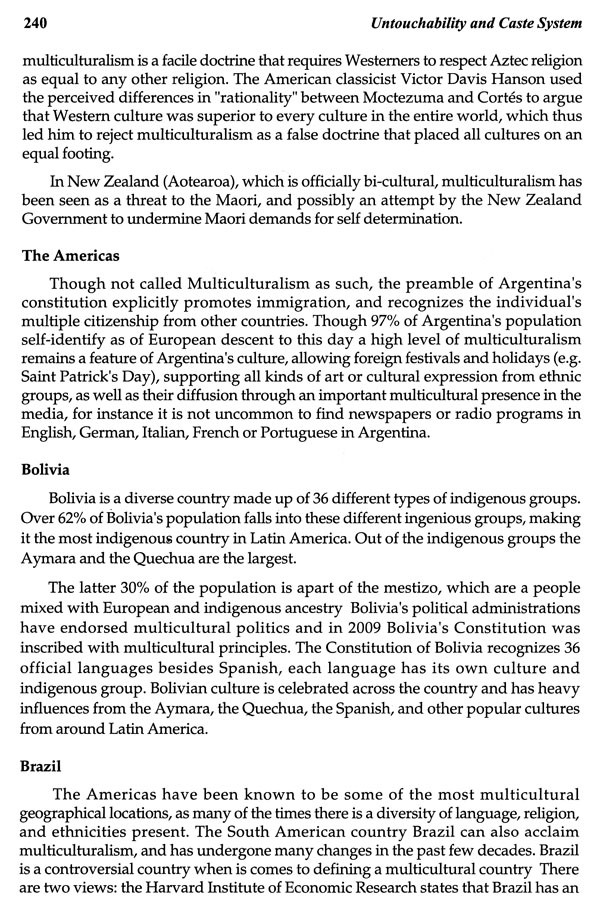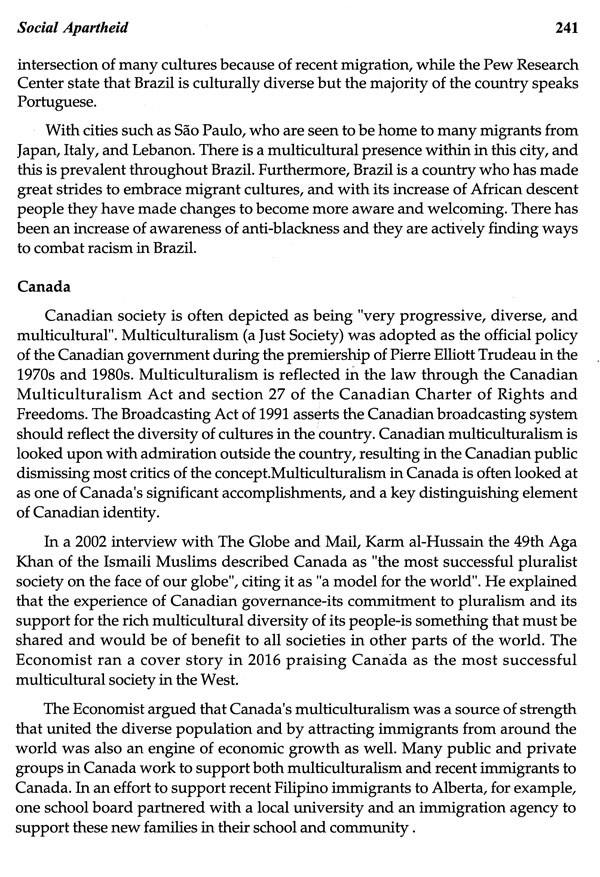
Untouchability and Caste System
Book Specification
| Item Code: | UAR498 |
| Author: | Ajaya Kumar Mallik |
| Publisher: | Edukeen Publisher |
| Language: | English |
| Edition: | 2019 |
| ISBN: | 9789389387520 |
| Pages: | 280 |
| Cover: | HARDCOVER |
| Other Details | 9.50 X 6.50 inch |
| Weight | 550 gm |
Book Description
For centuries, caste dictated almost every aspect of Hindu religious and social life, with each group occupying a specific place in this complex hierarchy. Rural communities were long arranged on the basis of castes - the upper and lower castes almost always lived in segregated colonies, the water wells were not shared, Brahmins would not accept food or drink from the Shudras, and one could marry only within one's caste. Traditionally, the system bestowed many privileges on the upper castes while sanctioning repression of the lower castes by privileged groups. Often criticised for being unjust and regressive, it remained virtually unchanged for centuries, trapping people into fixed social orders from which it was impossible to escape. Despite the obstacles, however, some Dalits and other low-caste Indians, such as BR Ambedkar who authored the Indian constitution, and KR Narayanan who became the nation's first Dalit president, have risen to hold prestigious positions in the country. The caste system in the form that it exists today in, is thought to be the result of developments during the collapse of the Mughal era and the British colonial regime in India. The collapse of the Mughal era saw the rise of powerful men who associated themselves with kings, priests and ascetics, affirming the regal and martial form of the caste ideal, and it also reshaped many apparently.
Ajaya Kumar Mallik is Associate Fellow, New Delhi, and has more than 10 years of research experience in the fields of informal sector, employment, and poverty. He was associated with the task force 'Definitional and Statistical Issues related to Informal Economy'. Besides this, he has worked in Indian Institute of Public Administration, Institute of Applied Manpower Research in different capacities.
For centuries, caste dictated almost every aspect of Hindu religious and social life, with each group occupying a specific place in this complex hierarchy Rural communities were long arranged on the basis of castes - the upper and lower castes almost always lived in segregated colonies, the water wells were not shared, Brahmins would not accept food or drink from the Shudras, and one could marry only within one's caste. Traditionally, the system bestowed many privileges on the upper castes while sanctioning repression of the lower castes by privileged groups.
Often criticised for being unjust and regressive, it remained virtually unchanged for centuries, trapping people into fixed social orders from which it was impossible to escape. Despite the obstacles, however, some Dalits and other low-caste Indians, such as BR Ambedkar who authored the Indian constitution, and KR Narayanan who became the nation's first Dalit president, have risen to hold prestigious positions in the country. The caste system in the form that it exists today in, is thought to be the result of developments during the collapse of the Mughal era and the British colonial regime in India. The collapse of the Mughal era saw the rise of powerful men who associated themselves with kings, priests and ascetics, affirming the regal and martial form of the caste ideal, and it also reshaped many apparently casteless social groups into differentiated caste communities. The British Raj furthered this development, making rigid caste organisation a central mechanism of administration. Between 1860 and 1920, the British segregated Indians by caste, granting administrative jobs and senior appointments only to Christians and people belonging to certain castes. Social unrest during the 1920s led to a change in this policy. From then on, the colonial administration began a policy of divisive as well as positive discrimination by reserving a certain percentage of government jobs for the lower castes. In 1948, negative discrimination on the basis of caste was banned by law and further enshrined in the Indian constitution, however the system continues to be practiced in India with devastating social effects.
**Contents and Sample Pages**
